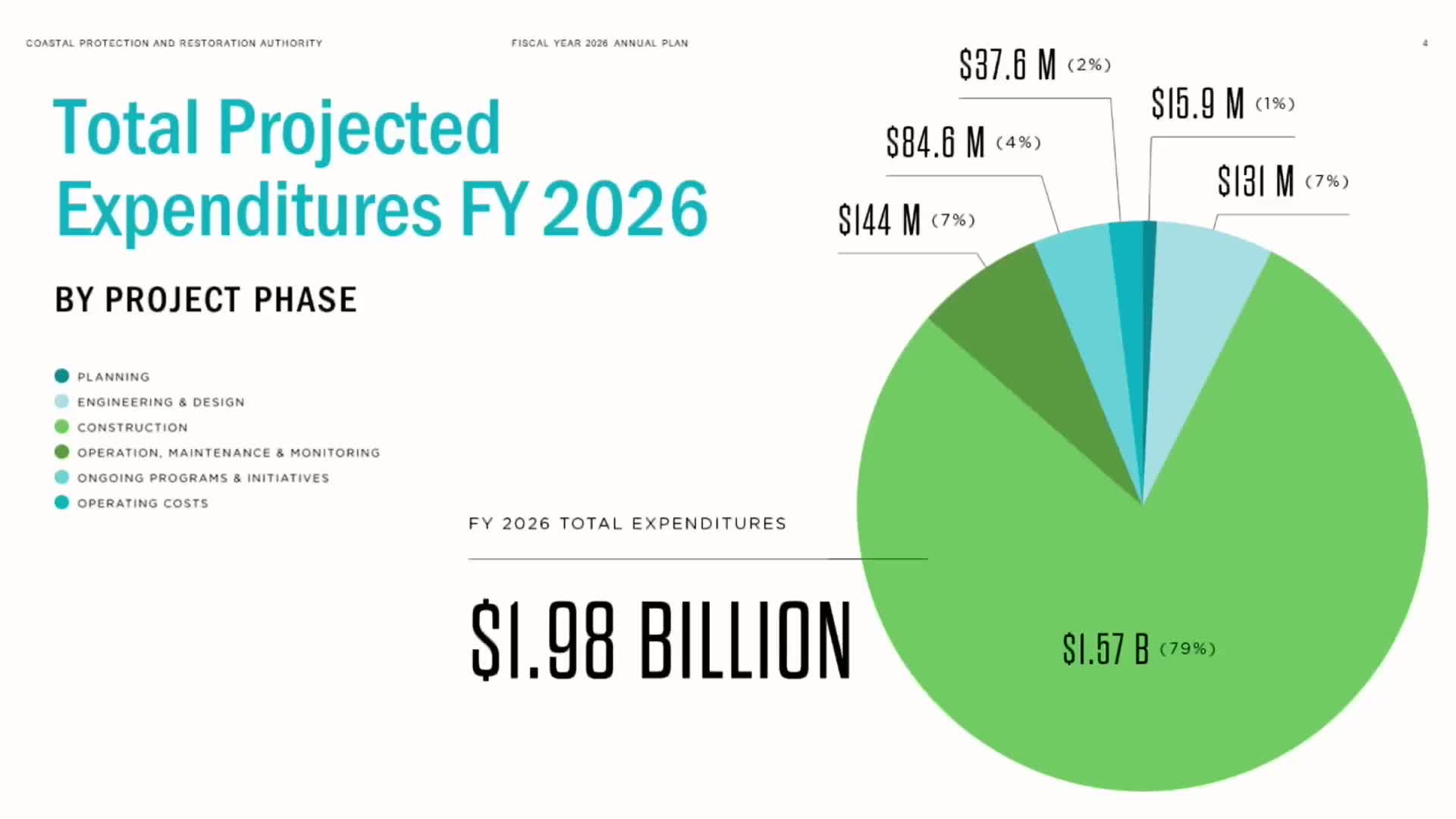Louisiana showcases $2B FY 2026 plan emphasizing dredging and job creation
May 29, 2025 | 2025 Legislature LA, Louisiana
This article was created by AI summarizing key points discussed. AI makes mistakes, so for full details and context, please refer to the video of the full meeting. Please report any errors so we can fix them. Report an error »

The Louisiana Legislature's House Natural Resources Committee meeting on May 29, 2025, highlighted a significant financial plan for the upcoming fiscal year, with total expenditures projected at nearly $2 billion. This budget is primarily focused on construction projects, with an impressive 93% allocated directly to project expenditures, underscoring the commitment to enhancing the state's infrastructure and environmental restoration efforts.
The meeting revealed that the largest source of funding comes from GoMesa, which involves revenue sharing from offshore energy. Additional financial support is derived from the Deepwater Horizon settlement and other recurring revenues, ensuring a robust financial foundation for the state's restoration initiatives. Over the next three years, the plan anticipates expenditures of approximately $1.5 billion, contributing to a long-term vision of $50 billion over 50 years for Louisiana's restoration projects.
One of the standout aspects of the plan is the focus on dredging projects, with 21 such initiatives included in this fiscal year. These projects are expected to build and nourish up to 16,000 acres of land, utilizing over 70 million cubic yards of material. This marks a significant increase from the previous year, where approximately 12,000 acres were addressed. The ongoing commitment to these projects not only aims to restore vital ecosystems but also supports the local economy.
The economic impact of these initiatives is substantial, projected to create over 13,000 direct jobs and generate approximately $773 million in labor income. This focus on job creation and economic growth aligns with the state's broader goals of enhancing community resilience and sustainability.
As the meeting concluded, the emphasis on effective financial management and project execution was clear. With a lean operational budget, the Louisiana government is poised to make significant strides in environmental restoration while simultaneously bolstering the local economy. The outcomes of these discussions will be closely watched as they unfold, with the potential for lasting benefits to the residents of Louisiana.
The meeting revealed that the largest source of funding comes from GoMesa, which involves revenue sharing from offshore energy. Additional financial support is derived from the Deepwater Horizon settlement and other recurring revenues, ensuring a robust financial foundation for the state's restoration initiatives. Over the next three years, the plan anticipates expenditures of approximately $1.5 billion, contributing to a long-term vision of $50 billion over 50 years for Louisiana's restoration projects.
One of the standout aspects of the plan is the focus on dredging projects, with 21 such initiatives included in this fiscal year. These projects are expected to build and nourish up to 16,000 acres of land, utilizing over 70 million cubic yards of material. This marks a significant increase from the previous year, where approximately 12,000 acres were addressed. The ongoing commitment to these projects not only aims to restore vital ecosystems but also supports the local economy.
The economic impact of these initiatives is substantial, projected to create over 13,000 direct jobs and generate approximately $773 million in labor income. This focus on job creation and economic growth aligns with the state's broader goals of enhancing community resilience and sustainability.
As the meeting concluded, the emphasis on effective financial management and project execution was clear. With a lean operational budget, the Louisiana government is poised to make significant strides in environmental restoration while simultaneously bolstering the local economy. The outcomes of these discussions will be closely watched as they unfold, with the potential for lasting benefits to the residents of Louisiana.
View full meeting
This article is based on a recent meeting—watch the full video and explore the complete transcript for deeper insights into the discussion.
View full meeting
